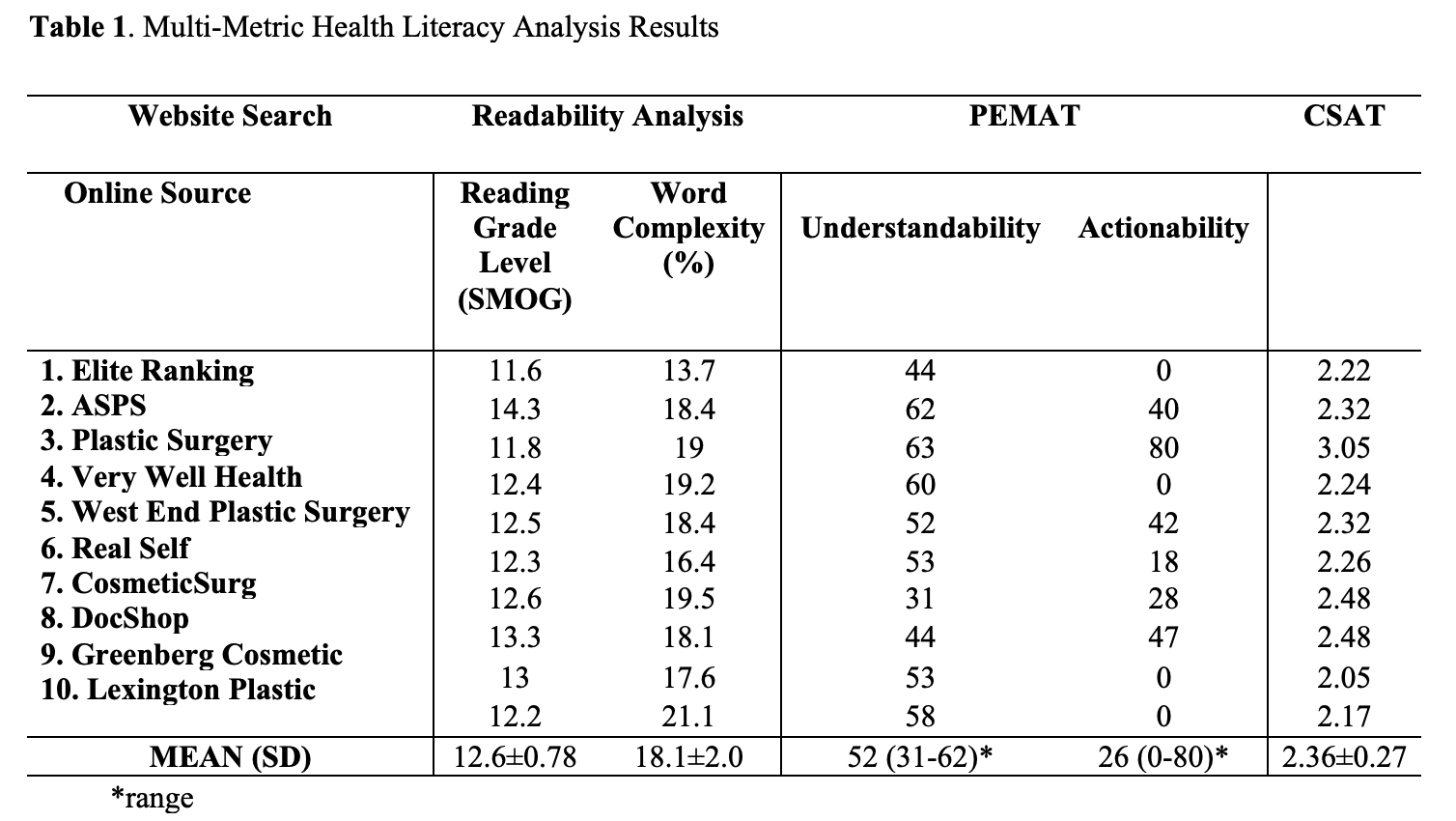A Multimetric Health Literacy Analysis of Online Brazilian Butt Lift Heath Information
Bao Ngoc N. Tran, MD1, Nicholas Oleck, BA1, Anna Rose Johnson, MPH2, Haripriya Ayyala1, Edward Lee1, Bernard Lee3.
1Rutgers New Jersey Medical School, Newark, NJ, USA, 2Rutgers Robert Wood Johnson Medical School, New Brunswick, NJ, USA, 3Beth Israel Deaconess Medical Center,, Boston, MA, USA.
BACKGROUND: According to the American Society of Plastic Surgeons, the rate of gluteal augmentations, commonly known as “Brazilian butt lift” or “BBL”, doubled from 2014 to 2018. As the demand for this procedure continues to rise, concerns about its safety and reports of fatalities have surfaced. BBL has a higher mortality rate when compared to other aesthetic surgeries. As patients continue to turn to the Internet as their primary source of health information, it is incumbent upon us to evaluate the quality of materials readily available. We conducted a multimetric literacy analysis of the most popular online patient education materials for Brazilian butt lift surgery.
METHODS: An online search using the term “Brazilian butt lift” was performed and the first 10, relevant patient-directed websites were identified. Each website was analyzed to determine readability using the Simplified Measure of Gobbledygook (SMOG) and word complexity. Two independent raters used validated health literacy tools to assess understandability and actionability using the Patient Education and Materials Assessment tool (PEMAT) and cultural appropriateness using the cultural sensitivity assessment tool (CSAT). Mean scores were calculated and interrater reliability was determined.
RESULTS: The top ten websites were written at a mean reading grade level of 12.6, appropriate for a high school senior. No website was written at the AMA and NIH recommended 6 to 8th grade reading level. Mean understandability and actionability scores of 52% and 26% respectively suggest significant room for improvement. Of note, 40% of websites had actionability scores of 0%. The average CSAT score was 2.36, below the recommended benchmark score of 2.5. Ninety percent of all websites did not meet the threshold for cultural acceptability. Cohen’s kappa was greater than 0.71 for both the PEMAT and the CSAT, indicating substantial agreement between raters.
CONCLUSIONS: Online patient education materials for BBL surgery did not meet recommendations for quality materials. Additionally, information regarding surgical risk and adverse events associated with BBL surgery were largely omitted from online patient resources. The absence of readily accessible and appropriately written education materials is likely to predispose patients to misinformation and unrealistic expectations, influencing surgical outcomes. As patients increasingly look to the internet as a primary source of medical information, it is imperative that appropriate, accurate, and culturally competent education materials are made available. 
Back to 2019 Abstracts
